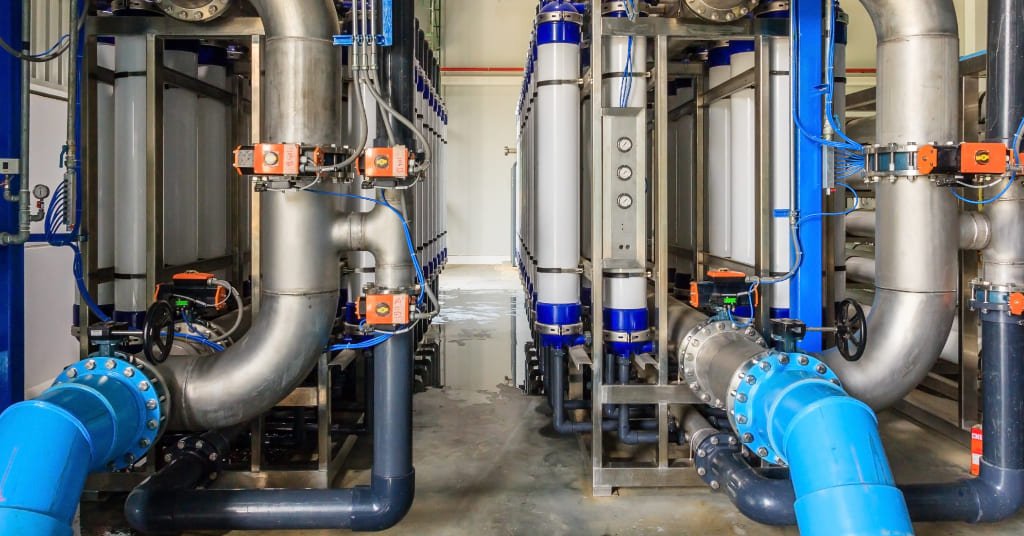In various industries such as wastewater treatment, oil, gas, etc., pipelines are essential to keep things going. These pipelines carry the constant flow of liquid/gas throughout different plants and are often under continuous pressure. Due to this, it is crucial for them to be strong, consistent, and well-monitored—which can be done through pipeline surge analysis.
That being said, many smaller plants overlook this aspect of their pipelines and use them round the clock without professional oversight. This is counter-productive and dangerous and can lead to immense problems such as pressure surges. Let’s understand what pressure surges are and why you must avoid them.
What Is a Pressure Surge?
The term ‘pressure surge’ refers to the event when a sudden change in flow rate within a pipeline leads to structural or other issues. This is caused due to a change in velocity of the fluid within the pipeline, whether it is a gas or liquid.
Specifically, according to Newton’s second law, the change in fluid momentum is subject to an external force which, in this case, manifests as pressure on the pipeline.
Many reasons can lead to pressure surges in various types of pipelines. Some of the most common are:
-
Closing a connected valve suddenly.
-
Shutting off a pump that supplies or is connected to the pipeline.
-
Sudden or emergency shutting down of the line.
-
Changes in the fluid characteristics such as density, viscosity, etc.
-
Instantaneous temperature changes.
It is, therefore, essential to avoid pipeline pressure surges because of the damage they can cause to the infrastructure. Depending on the fluid in the pipe and pressure releases, these surges can cause problems such as small leaks, cavitation in pipes, and even large ruptures in some cases.
Thus, many companies utilize dedicated software to monitor the pressure surge in their plants and pipelines. For example, pipeline simulators and surge analysis software help companies perform pipeline surge analysis and maintain efficiency and safety in their pipeline systems.
What Is Pipeline Surge Analysis?
Pipeline surge analysis is the study performed on liquid and gas pipelines to understand the pressure and forces caused due to changes of flow in the pipe.
These analyses allow engineers to understand the flow of fluids in a pipeline and regularly monitor the system.
There are multiple methods to perform surge analysis, with the most common being the “method of characteristics.”
This method initially splits the length of the pipeline into smaller sections with specific time steps. Using this method, many software can calculate the pressure and flow of fluid at each subsequent section.
While it may seem complex, this system is highly accurate and often used for longer pipelines.
Similarly, other methods such as the “variable time step method” uses a variable time step solver and work best with smaller pipe lengths.
That being said, these calculations and analyses require immense amounts of calculating power and specialized software. Specifically, pipeline simulators and surge analysis software are designed for such operations and many other utilities that can aid pipeline systems.
Read more: Water & Wastewater Treatment Plant – Capabilities Overview
Benefits of Pipeline Simulator & Surge Analysis Software

Pipe simulator software provides various benefits that make managing water, gas, oil, and related pipelines easier, along with surge analysis.
Some of the benefits are as follows:
-
Real-time modeling
Experienced engineers can create real-time models of complex pipelines utilizing pipeline simulators. These models make it easier to predict and manage fluid flow through pipelines.
This system is excellent for improving the infrastructure’s efficiency and makes it easier to incorporate changes, run tests, and detect any unwanted changes instantly.
-
Leak detection and location
Surge analysis software can help you assess the extent of physical damage caused by a pressure surge.
The software can detect any leaks and ruptures and provide details in real-time.
This feature is essential as the longer it takes to fix any issues, the worse the damage, especially for larger pipelines.
-
Create pipeline design and operating procedures
With the help of professional engineers, you can use such software to create complex and exact pipeline designs and plans. These make it much easier to manage the pipelines and set up rules and operating procedures for various related processes.
For instance, engineers can plan out the incorporation or removal of equipment according to pipeline simulator software.
-
Monitoring and data analysis
Apart from the safety benefits and tracking pressure surges, you can use the data collected by such software in many ways. Primarily, pipeline surge analysis makes immense data accessible—from fluid pressures to pipe strength—that engineers can use to ensure and improve efficiency.
For example, in the case of a water treatment plant, if you notice that there is a drop in overall plant efficiency, manually finding the problem could be tedious.
On the other hand, if you are using a pipeline simulator and surge analysis software, finding any changes in the pipeline will be much easier and save a lot of time and effort.
With these benefits and much more, incorporating a pipe simulator and surge analysis software to perform pipeline surge analysis on your fluid pipelines can make a positive difference.
Most importantly, you can improve efficiency while keeping pipelines safe and protected from surges and ruptures. That being said, performing such complex analyses is quite resource-intensive.
Also Read: Case Study – Boiler Combustion Analysis
The task requires dedicated software and seasoned engineers to set up and maintain these complex simulators and software. We at Mechartes can help make this process easier.
We offer specialized services such as Piping Stress & Support Design, Surge Analysis, and more to help keep your pipeline’s infrastructure maintained and safe. Just contact us, and we can arrange simulations and plans according to your specific requirements.


 Share
Share  facebook
facebook